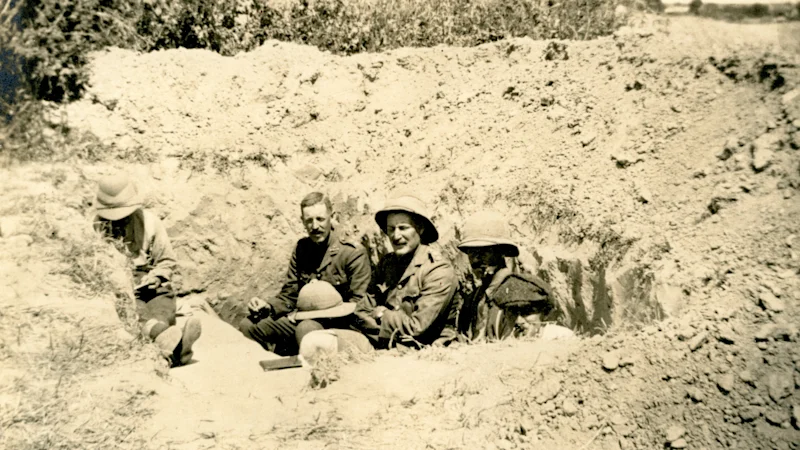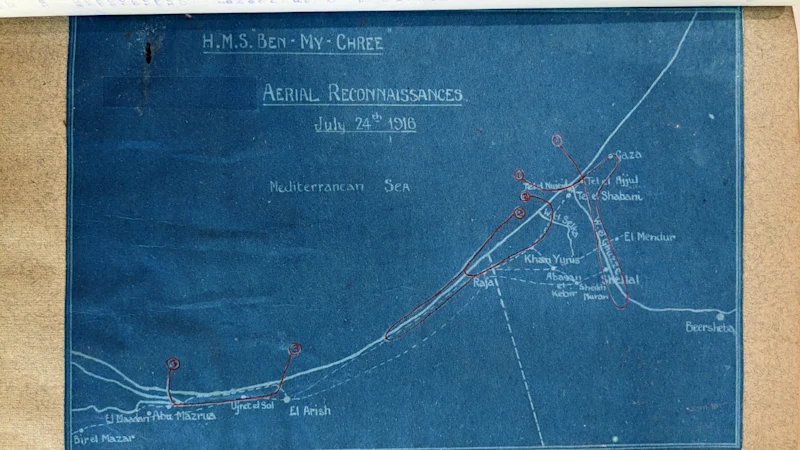The Mediterranean Sea, traditionally the preserve of great battle fleets and ancient maritime empires, became the unlikely theatre for one of the First World War’s most devastating campaigns. Between 1914 and 1918, German and Austro-Hungarian submarines turned this inland sea into a graveyard for Allied shipping, sinking over 1,700 vessels and bringing Britain to the brink of starvation by 1917.
A target-rich environment
When the Central Powers began their submarine campaign in earnest, they found the Mediterranean ideally suited to their purposes. Unlike the storm-lashed Atlantic, the generally calmer Mediterranean waters offered excellent visibility and operating conditions year-round. More crucially, the sea lanes were heavy with vital traffic: supplies flowing through the Suez Canal, reinforcements bound for Gallipoli and Salonika, and the essential trade between North Africa and France.

The statistics tell a stark story. Our submarine losses visualisation shows that 1,916 vessels fell victim to submarine action in these waters, with 1,727 sent to the bottom—a 90% kill rate that would have made any surface raider envious. The campaign reached its crescendo in 1917, when 805 ships were attacked—representing over 42% of all submarine victims in this theatre for the entire war.
Pioneers of underwater warfare
The submarine offensive began modestly in 1915 with Austrian boats operating from the Adriatic. The first major success came on 27 April 1915, when KuK U-5 sent the French armoured cruiser Léon Gambetta to the bottom with 684 men. But it was the arrival of German boats that transformed sporadic raiding into systematic campaign.

U-21, sailing from Germany on 25 April 1915, announced the new threat dramatically. Despite British naval intelligence intercepting German communications about her mission, the submarine successfully stalked the British pre-dreadnoughts supporting the Gallipoli landings. On 25 May, HMS Triumph became her first victim, followed two days later by HMS Majestic—both sunk while at anchor, a humiliating demonstration of the Royal Navy’s vulnerability.
The Mediterranean U-boat flotilla’s golden age
By 1916, the Mediterranean had become the scene of the most successful submarine operations of the entire war. Between July and August 1916, Kapitänleutnant Lothar von Arnauld de la Perière in U-35 achieved what can only be described as a massacre of merchant shipping. In just 25 days, he sank 54 steamers and sailing vessels totalling 90,150 tons. Combined with his previous cruise, von Arnauld de la Perière accounted for 94 ships and nearly 147,000 tons in just two months—a rate of destruction that modern naval warfare has rarely equalled.

The map shows the scale of German efficiency: more than 50 German U-boats operated in the Mediterranean and Black Sea, supported by at least 18 Austro-Hungarian boats. The diversity of submarine types tells its own story—from the large, long-range boats like U-35 to the smaller coastal UB boats and UC minelayers that could slip through Allied patrol lines.
Fatal divisions
What made the submarine campaign so devastatingly effective was not just German skill, but Allied disorganisation. The Mediterranean was carved up into national zones following the March 1916 Malta Conference—French, Italian, and British sectors that hampered coordinated anti-submarine efforts. Each nation jealously guarded its operational areas while submarines slipped between the boundaries at will.

The Allies compounded their problems by rejecting the convoy system until the late spring of 1917. Instead, they relied on patrolled routes—easily observed and avoided by submarine commanders—and the hopelessly inadequate practice of sailing ships independently. Only the British possessed sufficient small craft for escort duties; the French and Italian navies were unprepared for this new type of warfare.
The turning point
By early 1917, the situation had become desperate. Admiral Jellicoe, commander of the British Grand Fleet, writing in October 1916, warned that submarine losses might force Britain to accept unfavourable peace terms by summer 1917. The resumption of unrestricted submarine warfare by Germany in February 1917 brought this nightmare closer to reality.

April 1917 marked both the peak and the beginning of the end for the submarine offensive. That month saw the destruction of 254,911 tons of shipping by German Mediterranean boats alone, with Austrian submarines adding another 23,037 tons. Yet this very success forced the Allies’ hand. The introduction of convoys in late spring 1917 began to turn the tide, supported by new technologies including primitive sonar and depth charges.
A war of numbers and nations
The human and material cost of the submarine war extended far beyond simple tonnage figures. Attacked were vessels from 18 different nations, from major belligerents to neutral shipping from Norway, Sweden, and even distant Argentina. Mine warfare, accounting for 103 attacks (5.4% of the total), added another dimension of terror for merchant crews who never knew if their next voyage might end in a sudden explosion.

The geographic spread was equally vast. Submarine operations extended from the Black Sea to the Atlantic approaches, creating a web of underwater menace that stretched from Gibraltar to the Dardanelles and Russia.
Legacy of the Silent Service
The Mediterranean submarine campaign of 1914-1918 fundamentally changed naval warfare. It demonstrated that underwater boats could achieve strategic effects impossible for surface raiders, bringing great powers to their knees without winning a single fleet engagement. The lessons learned in these waters—about convoy protection, anti-submarine warfare, and the vulnerability of seaborne supply lines—would prove grimly relevant when the world went to war again just two decades later.

The interactive map of submarine losses allows us to see this campaign in detail, revealing patterns of attack, seasonal variations, and the gradual shift in the underwater war as Allied countermeasures evolved. Each plotted position represents not just a statistical entry, but a moment when the silent menace from beneath challenged the age-old supremacy of surface fleets.
In the end, the submarine campaign in the Mediterranean failed to achieve its ultimate goal of starving Britain into submission. But it came closer than many realised at the time, and in doing so, it wrote one of the most dramatic chapters in the history of naval warfare. The ghost ships that dot the Mediterranean floor remain silent testimony to a conflict that transformed not just how wars are fought at sea, but how nations think about their maritime lifelines in an age of global trade.
Explore submarine warfare in the Mediterranean at subs.littlegully.com.
References
Beesly, Patrick. Room 40: British naval intelligence 1914-18. London: Hamilton, 1982.
Halpern, Paul G. The Battle of the Otranto Straits: controlling the gateway to the Adriatic in World War I. Bloomington: Indiana University Press, 2004.
Halpern, Paul G. The naval war in the Mediterranean, 1914-1918. Annapolis, Md.: Naval Institute Press, 1987.
Imperial War Museums. ‘The U-boat campaign that almost broke Britain.’ Accessed June 2025. https://www.iwm.org.uk/history/the-u-boat-campaign-that-almost-broke-britain
Jellicoe, John Rushworth Jellicoe, Earl, 1859-1935. The submarine peril: the Admiralty policy in 1917. London: Cassell and Company, 1934.
Little Gully Publishing submarine losses database, compiled from multiple archival and published sources. Accessed via interactive map at https://subs.littlegully.com/
Lowery, Michael. Submarine losses database and research spreadsheet.
The U-boat Wars 1939-1945 (Kriegsmarine) and 1914-1918 (Kaiserliche Marine). Accessed June 2025. https://uboat.net/
UK Hydrographic Office Chart Y66: Mediterranean patrol zones 1917.
Wilson, Michael and Paul Kemp. Mediterranean submarines: submarine warfare in World War One. Manchester: Crecy Publishing, 1998.



